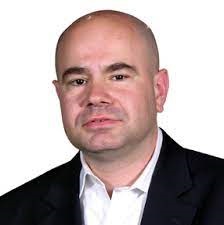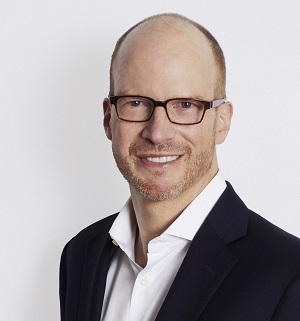From the great financial crisis emerged the liquid alternatives markets. Hedge funds—the millennium’s star performers that nearly doubled investors’ money while equities barely broke even—had become anchors of family office and institutional portfolios. Yet only a small percentage of the global investor base was eligible to invest due to high minimums and other restrictions.
Enter liquid alternatives, write SEI’s Radoslav Koitchev and Andrew Beer.
Hedge fund strategies ported into regulated funds and not only opened the doors to the “other 99%”, but promised to solve some of hedge funds’ most unpleasant features, like illiquidity, gating/suspension, opacity and egregiously high fees. Now, a new generation of investors could diversify beyond staid portfolios of traditional assets. During the early- to mid-2010s, a gold rush of product development ensued as asset managers launched hundreds of products. Innumerable wealth managers added “alts” sleeves to enhance traditional 60/40 portfolios.
Yet by the end of 2010s, it was difficult to find anyone satisfied with their liquid alts allocation. Wilshire Associates estimates the space returned a dismal 2% per annum, half that of hedge funds. Few were spared: funds run by some hedge fund luminaries suffered painful drawdowns and posted negative returns since inception. New to hedge fund strategies, inexperienced allocators tended to throw money at funds on a hot streak and found that luck, skill and leverage are nearly indistinguishable when staring in a rear-view mirror. Morningstar calculates elsewhere that performance-chasing cost investors more than 100% of returns.
It’s time to take a step back.
Those that fail to learn from history are doomed to repeat it. – Winston Churchill
A multitude of issues plague the liquid alts world, including managing “unconstrained” strategies in “constrained” vehicles, wishful thinking and back-tested results, hedge funds’ unique risks, and an aggressive hot-dot sales culture. Some were predictable—others less so.
It’s important that allocators learn from the past and address two key issues:
- Single manager risk
- Excessively concentrated portfolios
Single manager funds have a great deal of “idiosyncratic” risk. For instance, an individual equity long/short fund might specialise in value, growth, market neutral, emerging markets, or small caps, and their investment process might be fundamental or quantitative or a blend. Returns of those sub-strategies tend to vary widely, and even within each sub-category, individual fund returns are widely dispersed. In a typical year, the difference between the top-performing and bottom-performing quartile in equity long/short has been around 15%. In a volatile year, like 2020, this difference was over 27%. Just as a single stock is much more unpredictable than “equities,” single manager fund returns often vary widely from those of the benchmark or overall strategy.
Statistically, there are two other hurdles: alpha does not persist and single fund drawdowns often are twice, on average, those of the strategy. Consequently, a common allocator approach of screening funds in a given strategy and selecting one of the top performers not only seriously detracts from returns, but introduces significant risk of unexpected drawdowns. To draw an analogy, no prudent allocator would pick a single healthcare stock to fill an equity bucket.
Battle-hardened hedge fund investors in the 1990s and 2000s learned the hard way that broad diversification across a dozen or more funds is the only way to reliably control this risk. However, allocators to liquid alternatives typically pick only three or four funds. The explanation is both structural and behavioral.
First, wealth management portfolios typically have one or two funds per asset class bucket, so spreading a 5% equity long/short allocation across five funds would jump off the client reporting page. Second, at any given point, a few funds out of one hundred will look like they can reliably outperform, which lulls allocators into a false sense of security.
Insanity is doing the same thing over and over and expecting different results. – Albert Einstein
There are three solutions to these issues. Allocators can expand the portfolio to eight, 10 or more funds—perhaps not as many as the pension fund down the road, but far less risky. More sophisticated, well-resourced allocators, on the other hand, can solve this by creating internal funds of Ucits funds to match diversification with a single reporting line item.
Alternatively, allocators might replace the single manager portfolio with multi-manager fund. Those funds may have only eight to 10 underlying managers, but more sophisticated allocators have learned to deconstruct the risks underlying individual strategies to minimise the risk of catastrophic drawdowns. The alpha proposition is that the multi-manager vehicle will improve returns through strategy tilts and manager selection, while diversification will minimise left fat-tail risks. The two issues here are high fees—for both the manager and underlying funds—and a loss of transparency as the allocator is further removed from the underlying assets.
A final solution, which is increasingly getting attention, is to replicate a diversified pool of hedge funds. Whereas alternative risk premia (sometimes mislabeled as “replication”) essentially were risky, leveraged single manager macro vehicles, exposure replication takes the more mundane approach of seeking to mimic the core exposures of dozens, or even hundreds, of hedge funds with liquid instruments. The “target” portfolio typically provides broad diversification across strategies, sub-strategies and managers, with no performance-chasing risk. Under the theory that hedge funds generate plenty of alpha but is too often paid away to managers, the alpha proposition for some funds is to seek to replicate pre-fee returns and charge less.
Despite the troubles of the 2010s, the energy is back. Many funds fared well during the pandemic and recovery. In fact, “alpha is back” is the rallying cry across the hedge fund industry. The inflation scare lit a fire under allocators to find fixed income substitutes, and hedge funds are now high on the list. Inflows have picked up again. Allocators are far better informed today than even a few years ago, and many have evolved how they invest to combine replication with single managers in a core-satellite framework. While clearly there still is work to be done, we see green shoots and signs of optimism.
This article was written for Expert Investor by Radoslav Koitchev, managing director of alternative investments at SEI and Andrew Beer, founder of dynamic beta investments and co-portfolio manager of the SEI Liquid Alternative Fund.









